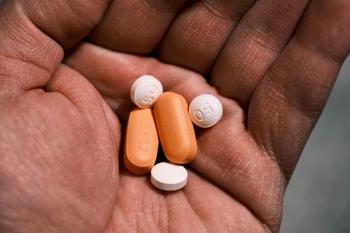
Sickle Cell Disease Management May Overlook Impactful Complications, Study Finds
Findings of a recent study suggest that complications of sickle cell disease (SCD) significantly contribute to morbidity and are more prevalent among older patients.
Although the most common complications of
SCD—an inherited blood disorder characterized by malformed, sickle-shaped red blood cells—causes hemolytic anemia, pain associated with vaso-occlusion, tissue ischemia, and general organ damage. It disproportionately affects African Americans and Hispanic Americans, and the condition’s clinical manifestations significantly impact patient quality of life (QOL).
Pain episodes, a hallmark symptom of SCD, can be debilitating and tend to occur more frequently as patients age. Crises related to vaso-occlusion due to sickled blood cells are a main contributor to morbidity and lead to the majority of emergency department visits and hospitalizations in patients with SCD. The only approved disease-modifying therapy is hydroxyurea, but other treatment strategies to address pain and/or vaso-occlusion are also used in SCD management.
Other complications of SCD, including priapism, nephropathy, and neurologic injury, have more recently been identified as significantly impactful to patient QOL. However, data on such complications and the costs associated with their management are limited. This claims analysis study aimed to provide insight into the incidence, health care resource utilization (HCRU), and costs associated with these complications in patients with SCD.
The study included 2524 pediatric and adult patients with SCD who were identified in a large administrative claims database covering both commercially insured patients and Medicare-enrolled patients. The mean patient age was 43.4 years, 85% of patients were adults, and 57.3% were female. The majority of patients (62.1%) had commercial insurance, and the remaining patients were enrolled in Medicare at the time of the study. Comorbidities were identified with Clinical Classifications Software from the Agency for Healthcare Research and Quality (AHRQ).
The most common AHRQ comorbidity at baseline was anemia (51.3%), with little variation between age groups. Other common comorbidities among pediatric patients included lower respiratory disease and heart disease. Common comorbidities in older patients (≥65 years) included hypertension, heart diseases, urinary system diseases, connective tissue diseases, and lower respiratory diseases.
The incidence of acute kidney injury (AKI) during follow-up was 53.1 per 1000 patient-years—the highest of the SCD-related complications in the study. The AKI incidence rate also increased sharply with age. Patients 17 years or younger had an incidence rate of 11.5 per 1000 patient-years vs 69.7 in those 65 yearsand older. Chronic kidney disease and stroke followed with incidences of 40.6 and 39 per 1000 patient-years, respectively. Overall, the prevalence of SCD complications varied with age but tended to be higher in older patients.
Short-acting opioids, hydroxyurea, and long-acting opioids were the most commonly used medications (54%, 11%, and 6.9% of patients, respectively). Hydroxyurea use differed between age groups and was highest in patients aged 16 to 17 years (25.5%), while just 1.1% of patients 65 years or older used hydroxyurea. Short-acting opioid use mostly followed the opposite trend, with 35.6% of patients 15 years or younger and 62.7% of patients aged 45 to 64 years using them. The group aged 65 years and older was an exception, with 45.1% using short-acting opioids.
HCRU, such as ambulatory visits, emergency department visits, inpatient stays, inpatient days, and pharmacy use, varied across age groups in the study but generally increased with age. Older patients were more likely to use outpatient resources, with those 65 years or older averaging 4 ambulatory visits per-patient per-month (PPPM), compared with 2.9, 2, 1.6, and 1.5 visits PPPM in patients aged 45 to 64 years, 35 to 44 years, 18 to 34 years, and 17 years or younger, respectively.
Overall, the total health care costs were $3417 PPPM, with inpatient costs accounting for much of the overall cost at $1455 PPPM on average. The mean (SD) PPPM costs for patients with each SCD complication were $893 ($2936) for priapism, $1612 ($5125) for AKI, $2404 ($7064) for chronic kidney disease, and $1338 ($4088) for neurologic injury.
“In this retrospective US claims analysis of insured pediatric and adult patients with SCD, complications were prevalent and occurred across all age groups, including among the youngest patients,” the authors concluded. These findings are in line with prior research suggesting that complications of SCD significantly contribute to morbidity and are more prevalent among older patients. The data also suggest underuse of disease-altering medication.
Limitations included a lack of ethnicity or race data and the fact that prescription of a medication does not indicate adherence to treatment. The analysis of treatment patterns in this study also did not include newer medications approved toward the end of the study period. Still, the findings suggest that complication burden is significant and treatment management may not be optimal in patients with SCD.
Reference
Manwani D, Burnett AL, Paulose J, et al. Treatment patterns and burden of complications associated with sickle cell disease: a US retrospective claims analysis. EJHaem. Published online October 6, 2022. doi:10.1002/jha2.575
Newsletter
Stay ahead of policy, cost, and value—subscribe to AJMC for expert insights at the intersection of clinical care and health economics.














































